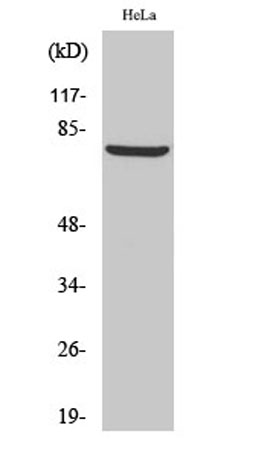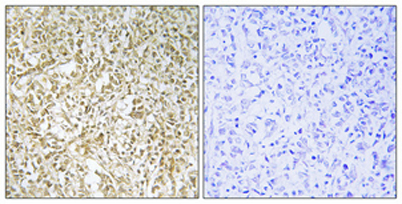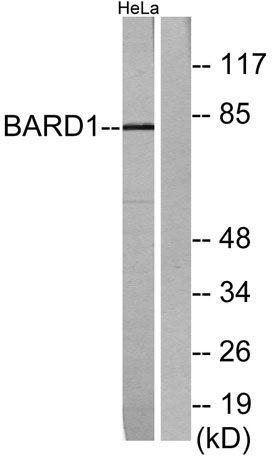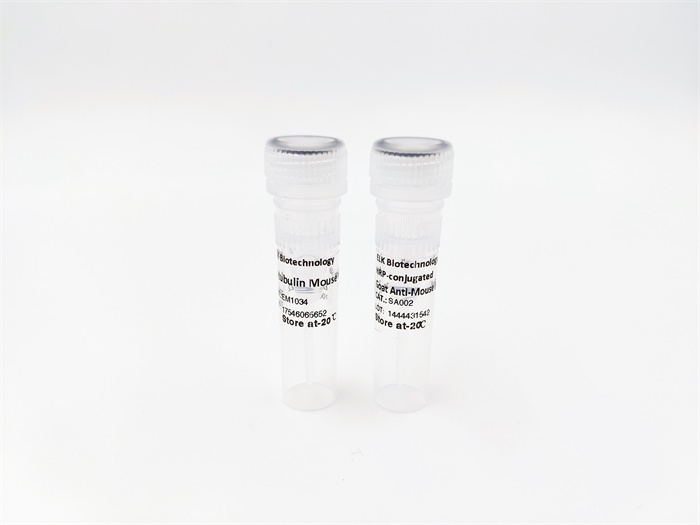








BARD1 rabbit pAb
 One-click to copy product information
One-click to copy product information$148.00/50µL $248.00/100µL
| 50 µL | $148.00 |
| 100 µL | $248.00 |
Overview
| Product name: | BARD1 rabbit pAb |
| Reactivity: | Human;Rat;Mouse; |
| Alternative Names: | BARD1; BRCA1-associated RING domain protein 1; BARD-1 |
| Source: | Rabbit |
| Dilutions: | Western Blot: 1/500 - 1/2000. Immunohistochemistry: 1/100 - 1/300. ELISA: 1/5000. Not yet tested in other applications. |
| Immunogen: | The antiserum was produced against synthesized peptide derived from human BARD1. AA range:1-50 |
| Storage: | -20°C/1 year |
| Clonality: | Polyclonal |
| Isotype: | IgG |
| Concentration: | 1 mg/ml |
| Observed Band: | 79kD |
| GeneID: | 580 |
| Human Swiss-Prot No: | Q99728 |
| Cellular localization: | Nucleus. During S phase of the cell cycle, colocalizes with BRCA1 into discrete subnuclear foci. Can translocate to the cytoplasm. Localizes at sites of DNA damage at double-strand breaks (DSBs); recruitment to DNA damage sites is mediated by the BRCA1-A complex. |
| Background: | This gene encodes a protein which interacts with the N-terminal region of BRCA1. In addition to its ability to bind BRCA1 in vivo and in vitro, it shares homology with the 2 most conserved regions of BRCA1: the N-terminal RING motif and the C-terminal BRCT domain. The RING motif is a cysteine-rich sequence found in a variety of proteins that regulate cell growth, including the products of tumor suppressor genes and dominant protooncogenes. This protein also contains 3 tandem ankyrin repeats. The BARD1/BRCA1 interaction is disrupted by tumorigenic amino acid substitutions in BRCA1, implying that the formation of a stable complex between these proteins may be an essential aspect of BRCA1 tumor suppression. This protein may be the target of oncogenic mutations in breast or ovarian cancer. Multiple alternatively spliced transcript variants encoding different isoforms have been found for this gen |
-
 Western Blot analysis of various cells using BARD1 Polyclonal Antibody
Western Blot analysis of various cells using BARD1 Polyclonal Antibody -
 Immunohistochemical analysis of paraffin-embedded Human breast cancer. Antibody was diluted at 1:100(4° overnight). High-pressure and temperature Tris-EDTA,pH8.0 was used for antigen retrieval. Negetive contrl (right) obtaned from antibody was pre-absor
Immunohistochemical analysis of paraffin-embedded Human breast cancer. Antibody was diluted at 1:100(4° overnight). High-pressure and temperature Tris-EDTA,pH8.0 was used for antigen retrieval. Negetive contrl (right) obtaned from antibody was pre-absor -
 Western blot analysis of lysates from HeLa cells, using BARD1 Antibody. The lane on the right is blocked with the synthesized peptide.
Western blot analysis of lysates from HeLa cells, using BARD1 Antibody. The lane on the right is blocked with the synthesized peptide.

 Manual
Manual